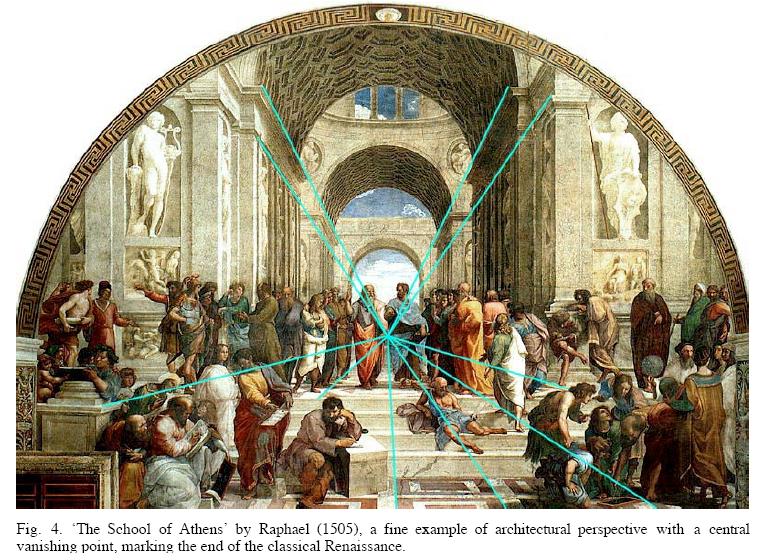| Home - Questioning The Painting - Analyzing Figures - Connecting To Literature - Architecture - The Painter - Coming Full Circle - Bibliography |
"A well known problem with wide-angle, perspective projections is that curved objects located near the edges of the viewing frustum, close to the image plane, can appear unnaturally stretched and distorted. The most common technique for decreasing this distortion is to alter the projection for every object to provide a perceptually “correct” view of each one. The deviations in projection are often subtle and in many cases even the artist, focused on producing a comprehensible image of the scene, may not realize he altered the projections. Kubovy shows that the foreground human figures in Raphael’s School of Athens [the front corner figures] ... are inconsistent with the strong central perspective projection of the background architecture. The inconsistencies improve the comprehensibility of the figures and make them easier to recognize." (Maneesh, 4)

"It is surprising, therefore, to find that almost all Renaissance examples relied on the simple onepoint perspective scheme. They never broke away from the concept of a principal vanishing point governing a rectangular grid on which the architectural elements were constructed. One of the prime exponents was Raphael, whose ‘School of Athens’ fully displays the architectural grandeur that could be achieved with this method, as a background for his evocation of the pantheon of ancient Greek philosophers. The central vanishing point is at Socrates left hand, close to the eye height of the standing figures in front of the steps, and just where it should be if the viewer was standing with them on the lower floor." (Tyler,5)